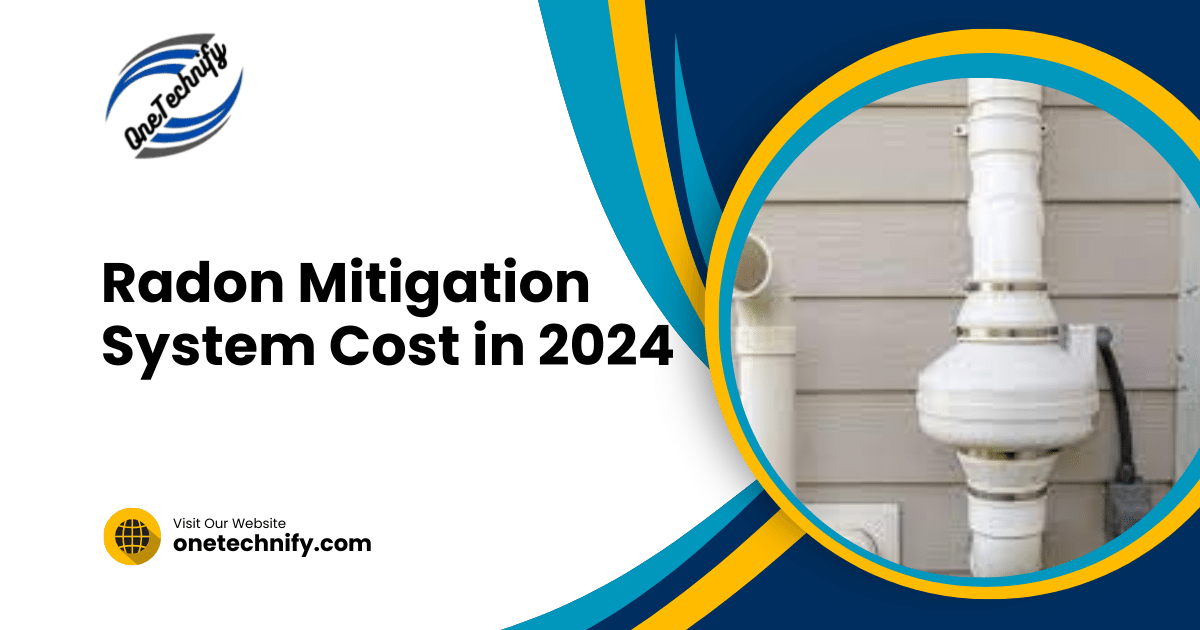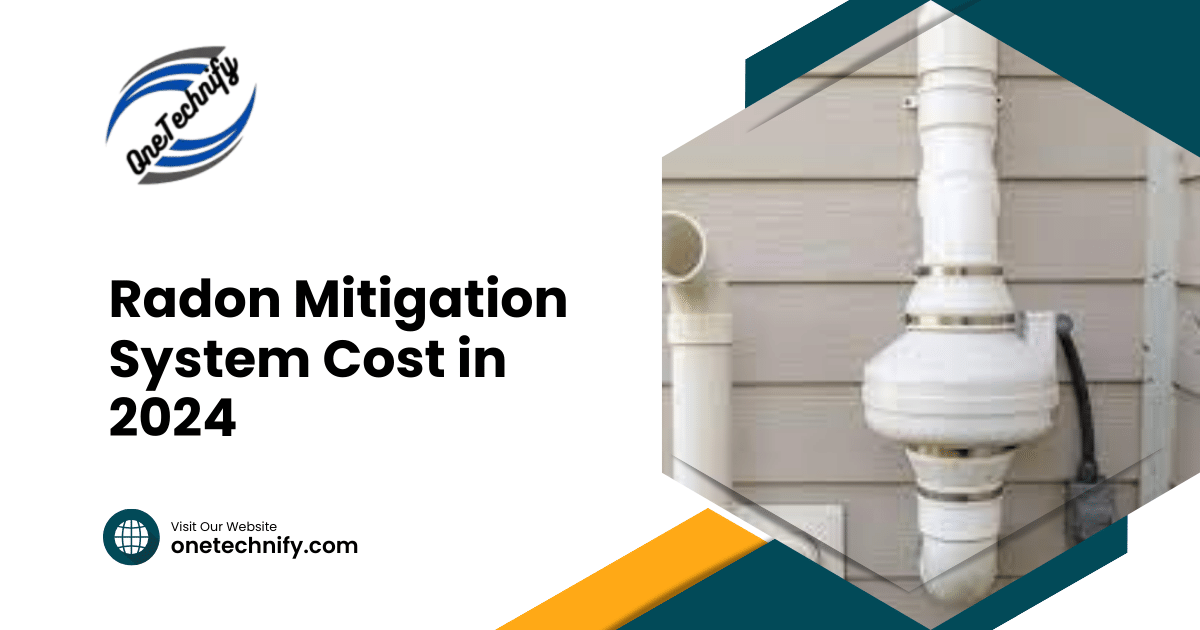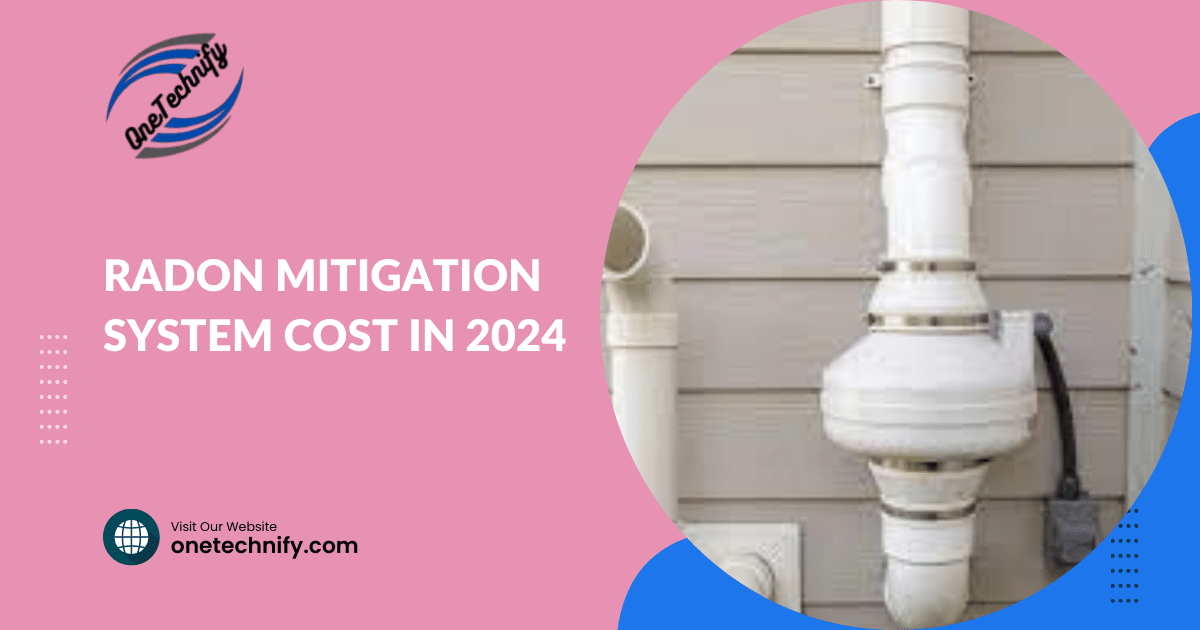Looking for information on how much a radon mitigation system costs? Radon, a colorless and odorless gas, poses health risks, including lung cancer, when present in high levels within homes. Mitigation systems offer a solution by reducing radon levels to ensure a safe living environment. The cost of installing these systems can vary based on factors like home size, foundation type, and local labor rates. Understanding these costs is essential for homeowners looking to safeguard their homes and families against this silent threat.
Radon mitigation system costs have evolved due to advancements in technology and increased awareness of the dangers associated with radon exposure and elevated levels. By exploring the historical context of these costs and compensation, we gain insights into how pricing structures have changed and improved over the years.
Table of Contents
Understanding Radon and Its Dangers
Factors Affecting Costs
Radon mitigation system cost varies based on several factors. The size of the property, foundation type, and radon levels influence the overall expense. For instance, larger homes may require multiple suction points to reduce radon levels effectively.
Installing a radon mitigation system in a house with a basement typically costs more than in a home without one. The complexity of the installation process can also impact the total cost. Geographical location plays a role as different areas have varying average costs for these systems.
Average Costs and Savings
On average, radon mitigation system costs range from $800 to $1,500 for most homes. However, prices can go up to $2,500 or more depending on specific requirements. Despite the initial investment, installing a radon mitigation system can save money in the long run by preventing potential health issues associated with prolonged exposure to radon gas.
- Pros:
- Protects against health risks.
- Increases property value.
- Cons:
- Initial installation cost.
- Ongoing maintenance expenses.
DIY vs Professional Installation
Deciding between DIY installation and hiring professionals is crucial when considering radon mitigation system costs. While DIY kits are available at lower prices starting around $100, professional installations ensure proper placement and effectiveness but come at higher costs ranging from $800 to over $2,000.
When opting for professional services:
- Research reputable companies.
- Get multiple quotes for comparison.
- Ensure they follow EPA guidelines for installation.
Radon Mitigation System Installation Cost in 2024
Factors Affecting Costs
Radon mitigation system cost can vary based on several factors. The size of the home, foundation type, and the chosen mitigation method all play a role. For example, homes with larger square footage may require more materials and labor, increasing the overall cost. Houses with crawl spaces might need additional sealing to prevent radon entry.
There are different methods available, such as sub-slab depressurization and ventilation. Each method has its own associated costs. Sub-slab depressurization involves installing pipes under the foundation to draw out radon gas, while ventilation systems use fans to circulate air and reduce radon levels.
Average Cost Estimates
On average, radon mitigation system installation costs around $1,200 to $1,500 in 2024 for a typical single-family home. However, prices can range from $800 to $2,500 depending on various factors like location and complexity of the installation process.
Here are some key points regarding radon mitigation system costs:
- The national average for installation is approximately $1,200-$1,500.
- Prices can be influenced by factors such as home size and foundation type.
- Different mitigation methods come with varying price tags.
Types of Radon Mitigation Systems and Their Costs
Active Sub-Slab Depressurization
Active sub-slab-depressurization is a common radon mitigation system that uses a fan to draw air from beneath the foundation, preventing radon from entering the home. Installation costs for this system typically range from $800 to $2500. The pros include effectiveness in reducing radon levels and being suitable for various foundation types. However, one con is that it requires electricity to operate.
- Pros:
- Effectively reduces radon levels
- Suitable for different foundation types
- Cons:
- Requires electricity
Passive Sub-Slab Ventilation
Passive sub-slab ventilation systems rely on natural pressure differentials to draw out radon gas from beneath the home. These systems are usually less expensive than active systems, with costs ranging between $500 and $1500. One of the advantages of passive systems is their low operational cost since they do not require electricity. On the flip side, a potential downside is their reliance on atmospheric conditions for optimal performance.
- Advantages:
- Low operational cost
- Disadvantages:
- Reliance on atmospheric conditions
Factors Impacting Radon Abatement Cost
System Type
Radon mitigation system cost can vary based on the type of system chosen. Active soil depressurization systems, which are the most common, typically range from $800 to $2500 for installation. On the other hand, passive ventilation systems are usually less expensive to install but may not be as effective in reducing radon levels.

Choosing between these two types depends on various factors like your home’s structure and foundation, soil composition, and local climate conditions. Active systems require electricity to operate fans that draw radon gas out from beneath the house, while passive systems rely on natural airflow.
Home Size and Layout
The size and layout of your home play a significant role in determining radon mitigation costs. Larger homes with multiple stories or complex layouts may require more extensive piping or additional suction points for the mitigation system. This can increase both material and labor costs associated with installation.
For example, a small single-story home with a simple layout might only need one suction point in the basement floor slab for an active mitigation system. In contrast, a larger two-story house with a basement could necessitate multiple suction points across different floors to effectively reduce radon levels throughout the entire property.
Location
The geographical location of your home also impacts radon abatement costs. Areas with higher average radon concentrations may require more robust mitigation systems to achieve safe indoor air quality levels. Labor costs can vary depending on local regulations and permit requirements.
In regions where radon is prevalent in soil composition due to geological factors such as granite bedrock or high uranium content, homeowners might incur higher expenses for specialized mitigation techniques like sub-slab depressurization or heat recovery ventilation systems tailored to address elevated radon levels efficiently.
Lifespan of Radon Mitigation Systems
Durability of Systems
Radon mitigation systems are durable and typically last for a long time, providing consistent radon reduction in homes. These systems are designed to withstand various environmental conditions without compromising their effectiveness. Regular maintenance can help extend the lifespan of these systems further.
Installing a quality radon mitigation system ensures that it effectively reduces radon levels in your home for an extended period of time. These systems often come with warranties that guarantee their performance over several years. Proper installation is crucial to ensuring the system’s longevity and efficiency.
Factors Affecting Longevity
The lifespan of radon mitigation systems can vary based on several factors, such as the type of system installed, the quality of materials used, and the level of maintenance performed. Professional installation by certified contractors plays a significant role in ensuring the system lasts for many years without issues.
Regular inspections and maintenance are essential to keep the radon mitigation system functioning optimally over time. Changing environmental conditions, wear and tear, or damage can impact the system’s efficiency if not addressed promptly through proper upkeep.
Ideal Placement for Radon Mitigation Systems
Exterior Placement
Radon mitigation systems are typically installed in the basement or crawl space of a home. Exterior placement involves locating the system outside the house, usually near the foundation. This installation method is effective at preventing radon from entering through cracks in the foundation.
Installing a radon vent pipe along with a fan on the exterior of your home can effectively reduce radon levels. The cost of this type of system can vary depending on factors such as the size and design of your home, soil conditions, and local labor rates.
Interior Placement
Alternatively, some homes may opt for an interior placement for their radon mitigation system. This involves installing the system inside the house to draw out radon gas from beneath the foundation. Interior systems are often more discreet than exterior ones but may require additional components like PVC piping and sealing materials.
When considering where to place your radon mitigation system, it’s essential to consult with a professional to determine which option is best suited for your home’s layout and construction. Factors such as existing plumbing, electrical work, and structural considerations play a crucial role in determining placement.
DIY vs. Professional Radon Mitigation
Cost Comparison
Installing a radon mitigation system can be done either by yourself or by hiring professionals. The cost of each option varies significantly. DIY kits are typically cheaper, ranging from $100 to $500 for materials. On the other hand, professional installation can cost between $800 and $2500, depending on the complexity of the system needed.

DIY kits may seem more budget-friendly at first glance, but they might not always provide a long-term solution if not installed correctly. Professional installations ensure that the system is set up properly to effectively reduce radon levels in your home.
Effectiveness Consideration
Professional radon mitigation systems often guarantee better results compared to DIY solutions. Professionals have the expertise and experience to assess your home’s specific needs accurately and install a customized system that effectively reduces radon levels.
While DIY kits come with detailed instructions, mistakes in installation could lead to inefficiencies in reducing radon concentrations. It’s crucial to weigh the effectiveness of each option based on your home’s unique requirements before deciding which route to take.
Saving Money on Radon Mitigation
Importance of Cost Considerations
When thinking about the cost of a radon mitigation system, it’s crucial to consider various factors that can impact the overall expenses. Factors such as the size of your home, the type of radon mitigation system needed, and whether you opt for a professional installation or a do-it-yourself approach can all influence the final cost. The location of your home and the severity of the radon levels in your area can also play a role in determining how much you will need to spend on mitigation efforts.
One way to save money on radon mitigation is by comparing quotes from different radon mitigation professionals. By obtaining multiple quotes, you can ensure that you are getting a fair price for the services being offered. It’s essential to remember that while cost is an important factor, quality should not be compromised. Opting for cheaper solutions that may not be as effective could end up costing you more in the long run if additional measures are required.
DIY Solutions and Cost Savings
For those looking to save money on radon mitigation, exploring do-it-yourself options could be a viable choice. DIY radon mitigation kits are available for purchase online or at hardware stores and typically come with detailed instructions for installation. While these kits may come at a lower initial cost compared to hiring a professional, it’s essential to weigh the pros and cons carefully before deciding on this approach.
Finding Qualified Radon Mitigation Contractors
Research Online
When considering the cost of a radon mitigation system, start by researching online for qualified contractors. Look for companies with positive reviews and ratings from previous customers. Check if they are certified by the National Radon Proficiency Program (NRPP) or the National Radon Safety Board (NRSB). These certifications ensure that the contractor has undergone proper training and follows industry best practices.
It’s essential to request quotes from multiple contractors to compare prices and services offered. Ask about their experience in installing radon mitigation systems and inquire about the specific techniques they use. A reputable contractor will be transparent about their process, provide a detailed estimate, and answer any questions you may have regarding the installation.
Seek Recommendations
Seek recommendations from friends, family, or neighbors who have had radon mitigation systems installed in their homes. Personal referrals can help you find trustworthy contractors who deliver quality work at a reasonable price. Reaching out to local real estate agents or home inspectors can also lead you to reliable professionals experienced in mitigating radon levels effectively.
- Research online for qualified contractors with positive reviews.
- Obtain quotes from multiple contractors for price comparison.
- Seek recommendations from friends, family, or local real estate agents.
Closing Thoughts on Radon Mitigation System Cost
You’ve delved into the world of radon mitigation, understanding its risks, costs, and installation. By now, you know it’s crucial to address this silent threat promptly. Remember, the expense of mitigation pales in comparison to the value it adds; your health and peace of mind are priceless. Take charge of your home’s safety and consider investing in a radon mitigation system without delay.

Don’t let radon lurk unnoticed; take action today to safeguard your loved ones. Whether you opt for a professional installation or decide to tackle it yourself, the key is to act swiftly. Your home should be a sanctuary, not a source of danger. Stay informed, stay safe, and make informed decisions.
Frequently Asked Questions
What is radon, and why is it dangerous?
Radon is a colorless, odorless gas that can seep into homes from the ground, leading to serious health risks. It is the second-leading cause of lung cancer in the United States.
How much does a radon mitigation system cost on average?
The cost of installing a radon mitigation system typically ranges from $800 to $1,500. However, prices may vary based on factors such as home size, foundation type, and chosen mitigation system.
Can I install a radon mitigation system by myself?
While some homeowners opt for DIY installation to save money initially, it’s recommended to hire professionals. Certified contractors have the expertise and tools needed to ensure proper installation and effective radon reduction.
How long do radon mitigation systems last?
With proper maintenance and regular inspections, most radon mitigation systems can last for 10–15 years or even longer. It’s crucial to schedule periodic check-ups to ensure the system continues to function optimally.
Where should I place a radon mitigation system in my home?
Ideally, a radon mitigation system should be installed in areas with high levels of radon gas concentrations. Common placement locations include basements or crawl spaces where radon tends to accumulate. Professional contractors can assess your home for optimal placement.






